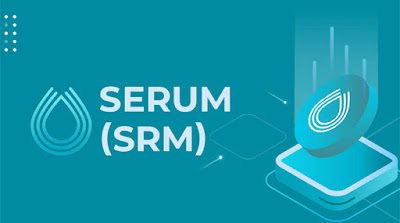What Is Serum (SRM)?
Serum is a decentralized exchange (DEX) and ecosystem that brings unprecedented speed and low transaction costs to decentralized finance (DeFi).
Serum is the only high-performant DEX designed around a fully on-chain central limit order book and matching engine. Ecosystem partners can compose with Serum’s on-chain orderbook to share liquidity and power their trading features for institutional and retail users.
In light of the popularity of DeFi and the growth of DEXes on Ethereum, users and developers are limited by high gas costs and slow transactions. Serum aims to resolve these traditional problems of DeFi, as well as issues of centralization, low capital efficiency, and liquidity segmentation.
The SRM utility and governance token enables users to receive discounts on protocol fees and voting rights; 100% of exchange fees flow back to SRM via buy-and-burn, staking rewards, and ecosystem grants.
Who Are the Founders of Serum?
Serum is an open source project created by a consortium of partners including FTX, Alameda Research, and the Solana Foundation.
Its development is currently supported by the Serum Foundation, backed by a group of experts in cryptocurrency, trading and decentralized finance. The project borrows much of its design and thought leadership from a wide number of firms in the cryptocurrency and finance industries.
What Makes SRM Unique?
Serum DEX’s on-chain central limit order book and matching engine provides liquidity and price-time-priority matching to traders and composing projects. Users benefit from this exchange model through the ability to choose the price, size and direction of their trades. Composing projects benefit from Serum’s existing architecture, bootstrapped liquidity, and matching service.
How Is the Serum Network Secured?
Serum is built on Solana and is completely permissionless. Solana is a web-scale blockchain that can reach 50,000 transactions per second and 400ms block times. This is achieved through a verifiable delay function, known as SHA 256 hash chain. Serum’s design is meant to ensure that DeFi can compete against centralized services.
How Does Serum Work?
Serum’s network and design is meant to facilitate transactions in a way that feels similar to that of traditional exchanges.
By being integrated within the Solana network, Serum benefits from the speed and cost effectiveness of transactions, and allows for them to be settled on its blockchain.
Order Books
In traditional exchanges, order books refer to a list of buy and sell orders organized by price levels and maintained by a central entity. Serum’s decentralized exchange aims to automate this process on chain by matching sellers and buyers based on their orders.
Unlike automated market making, where traders buy and sell cryptocurrencies from liquidity pools, Serum gives their participants full control over their orders. This gives them the ability to choose the price that they wish to buy and sell their assets and the ability to pick any order size they desire.
Like in any exchange, there is a fee associated with each trade, denominated in SRM. Serum aims to have all net fees go into a buy and burn model, meaning that the tokens used for transaction fees are removed from circulation.
Cross Chain Swaps
One of Serum’s major utility is its ability to bring cross chain swaps to its exchange, allowing any participant to trade tokens that exist on other platforms.
Using cross chain exchange between Ethereum tokens (ERC-20) as an example, the cross chain swaps mechanism happens once both parties send ETH to a smart contract as collateral. If the sender sends their token to the receiver in exchange for their token, both parties will receive their ETH collateral back.
In case of a dispute, the smart contract that holds the collateral determines who is right by checking the blockchain ledger. The smart contract then sends the assets back to whomever they deem to be correct, plus a portion of the other person’s collateral, aiming to incentivize good behavior.
Tags:
Cryptocurrency
